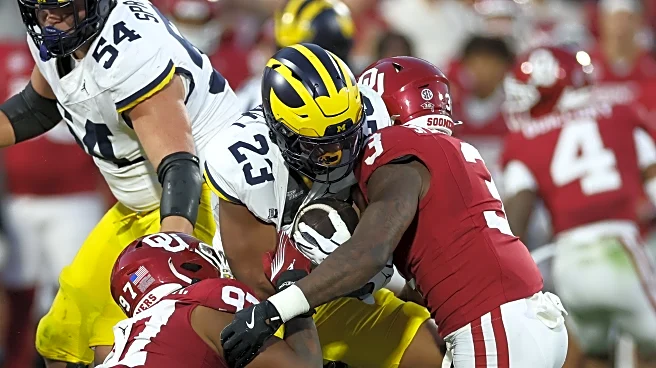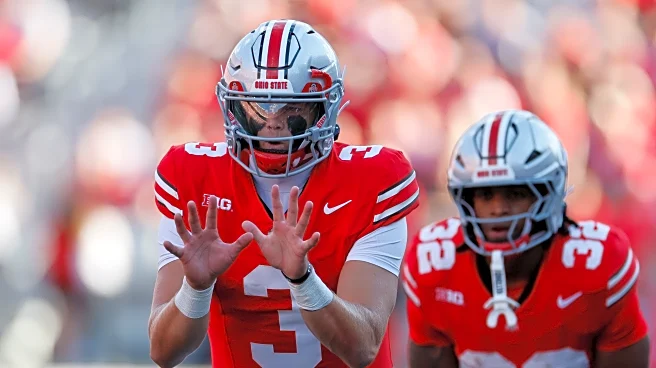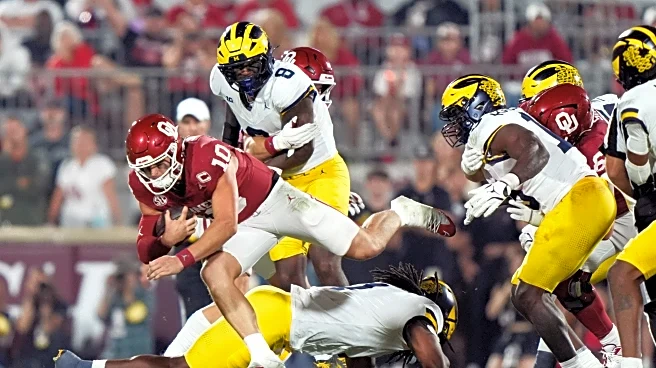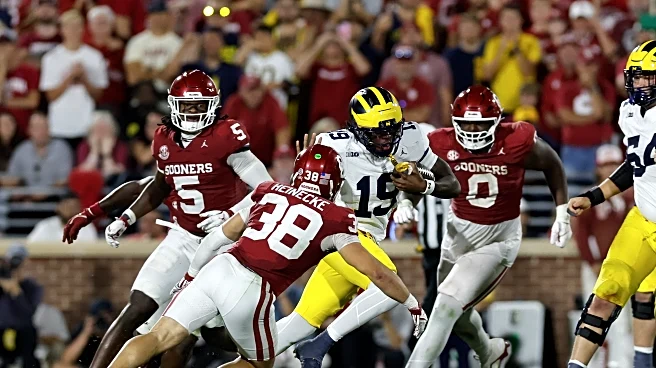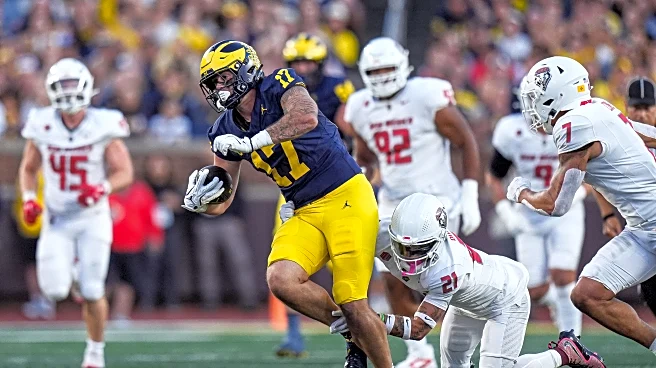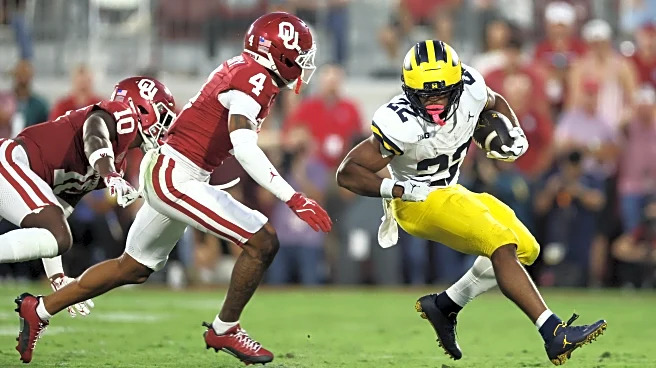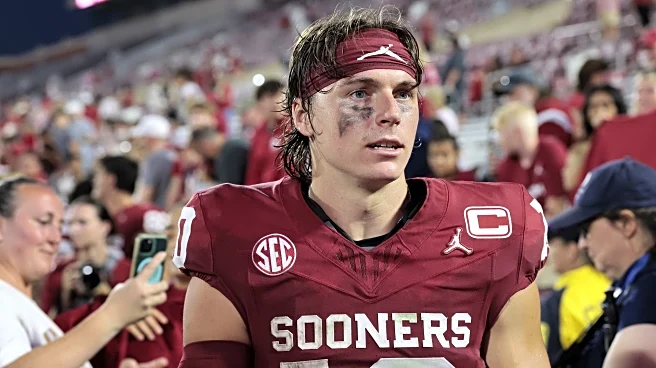
Spirits were high in Ann Arbor after Michigan defeated New Mexico in its season opener. The Wolverines never really distanced themselves from the visiting Lobos, and the margin of victory was less than half of the gaudy pre-game point spread, but Michigan was never seriously challenged either. The story of the game was the successful debut of freshman phenom Bryce Underwood – and the promise of how Underwood would change the Michigan offense.
Playing Oklahoma in week two – on the road, no less – would
be another story altogether. The Top 25 match-up would not only be Michigan’s first real test of the season, but would serve as a barometer of sorts of where Michigan stands as a team. After a 24-13 loss in a game that wasn’t as close as the final score would suggest, Michigan showed it has a long way to go if it hopes to measure up to the Big Ten’s elite.
Losing to Oklahoma in and of itself is not concerning. The smart money was always Brent Venables’ defensive-minded Sooners. It’s how Michigan looked in losing that raised red flags.
On offense, Michigan could do little against the aggressive Oklahoma defense. Intent on establishing the run long after it was clear that such a strategy was fruitless, Michigan spent most of the game bashing its head against the proverbial wall, or in this case, into Oklahoma’s seven-man front.
Other than a 75-yard Justice Haynes touchdown run on the first play of the second half, a play that brought Michigan to within a touchdown, the Wolverines were stymied on the ground. Take away Haynes’ 75-yard scamper, and the Wolverines rushed for just 71 yards on 31 carries, good for a paltry 2.3 yards per carry.
When Michigan did attempt to do something other than run the ball, rather than look downfield, the Wolverines tried an assortment of trick-ish plays or screen passes – a curious choice against a defense as aggressive as Oklahoma’s. Not surprisingly, with Oklahoma’s linebackers crashing upfield with no fear of being beaten over the top, most screens (and one ill-fated reverse) were blown up immediately.
Chip Lindsey will field his share of criticism for a game plan that never really got off the ground, but Michigan’s problems ran much deeper than play calling.
Michigan’s problems started up front, with an offensive line that was bullied by Oklahoma for most of the night. Indeed, on the rare occasions that Underwood did drop back to pass, Oklahoma’s defensive front all but caved in the interior of Michigan’s offensive line.
In fact, it begs the question: Was Michigan’s reluctance to attack through the air a matter of conservative play-calling, or rather a lack of confidence in its offensive line?
Michigan’s offensive struggles against a strong Oklahoma defense were to be expected, however. What wasn’t expected was Oklahoma’s offense getting the better of Michigan’s defense to the degree to which it did.
Give credit to Oklahoma quarterback John Mateer for being a difference maker. The senior transfer has drawn comparisons to former Sooner and Heisman Trophy winning quarterback Baker Mayfield, and you saw why Saturday night. Mateer threw the ball well, completing 21 of 34 passes for 270 yards and a touchdown. But it was his legs that were the difference. A slippery runner, Mateer rushed 19 times for 82 yards and a pair of touchdowns – and repeatedly came up big on third (and sometimes fourth) down.
Mateer was the best offensive player on the field and it wasn’t particularly close. But it was more than just the quarterback play that tipped the scales in Oklahoma’s favor. A Sooner offense that barely cracked the century mark on the ground against Illinois State in the season opener rushed for 149 yards on the ground against Michigan. In total, the Sooners rolled up 480 yards of total offense on a Michigan defense that coaches said compared favorably to last year’s top-ten unit.
Such comparisons should probably be put on hold for the time being.
As far as Underwood, the young signal-caller didn’t seem to be overwhelmed by the moment, but he didn’t appear comfortable either. He didn’t look as sharp as he did in his debut a week earlier, ending the game completing just nine of 24 passes for 142 yards. But that’s understandable given the quality of the opponent and the stage Underwood is at in his career.
But don’t take my word for it. “(Underwood) played a really good defense today,” Oklahoma’s Mateer said after the game. “I can’t imagine being a young quarterback trying to play that defense. He put up a good fight.”
As much as fans and pundits may have jumped the gun with proclamations about Underwood’s development and impact on Michigan’s offense after one game, they should be similarly careful to read too much into his performance in game two. Underwood will be fine – and will only improve over the course of the season. “That’s not the end of his career,” Mateer added about Underwood. “He’s going to be a very, very good quarterback.”
But will Michigan be fine? Or more to the point, how much can the Wolverines improve over the course of the season?
Some of the issues that plagued the Wolverines can be addressed. As Underwood spends more time with his receivers and running backs, their timing and communication will improve. Michigan’s young secondary, exposed at times Saturday, will get better over time – particularly if Rod Moore and Shamari Earls return from injury. But other problems run deeper, starting with an offensive line that was physically overmatched by Oklahoma.
Saturday’s loss didn’t derail Michigan’s season, but it did expose the gap between where the Wolverines are and where they want to be. Fortunately for Sherrone Moore and the Wolverines, they have ten games to try to get there.
